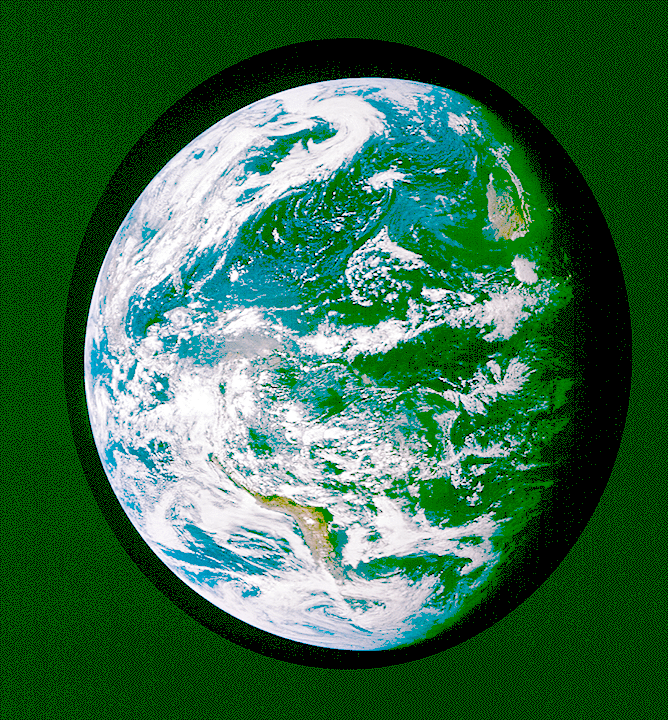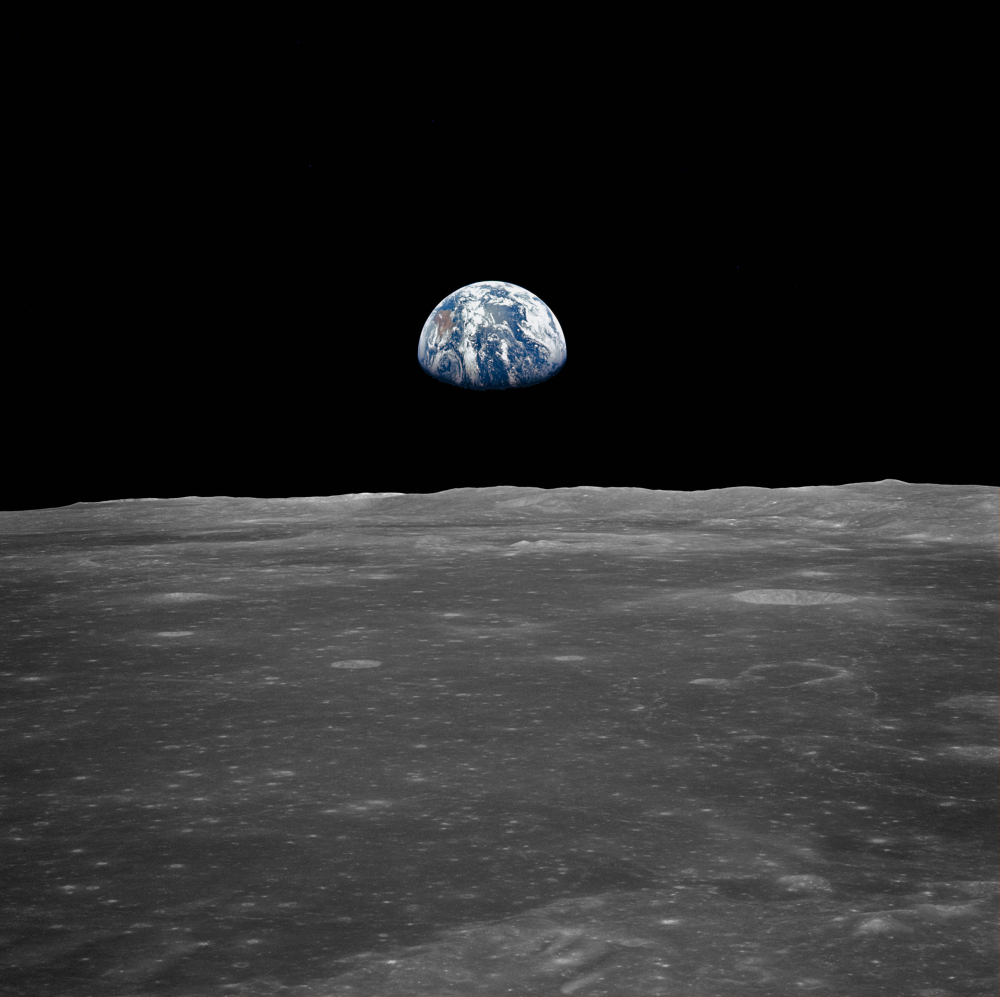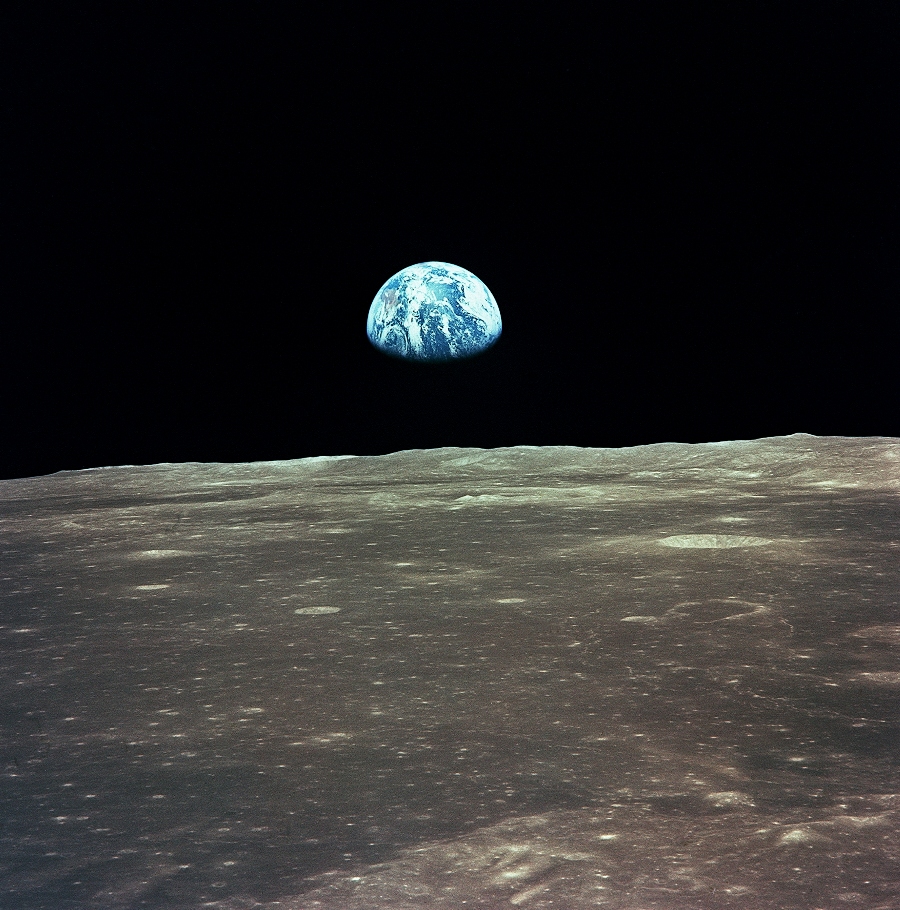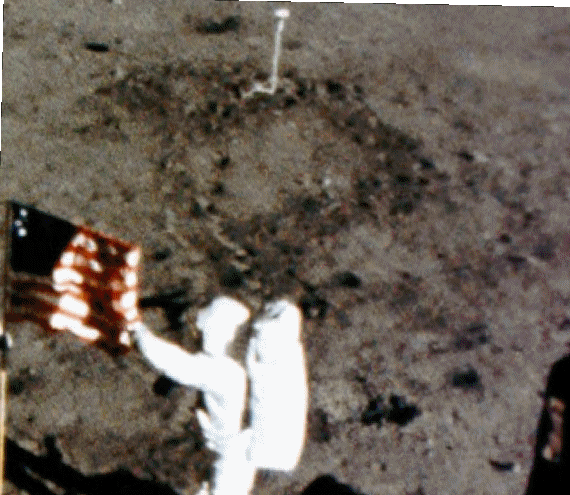It looks like you're using an Ad Blocker.
Please white-list or disable AboveTopSecret.com in your ad-blocking tool.
Thank you.
Some features of ATS will be disabled while you continue to use an ad-blocker.
share:
originally posted by: Grenade
a reply to: TamtammyMacx
You read wrong, to be fair the radiation experienced by the Apollo astronauts based on our current understanding is well within what would be classed as lethal.
If it was me I’d deffo be wearing a tin foil hat for that part of the journey.
originally posted by: OneBigMonkeyToo
a reply to: Ove38
The 'big picture' is composed of several images in a panorama.It's in tbe link I posted. They're even labelled for you. That is very different to your claim of it being a subsection of a larger image. The light source is the sun. Prove it isn't.
Are you just going to gish gallop through every piece of easily debunked c**p you've read or do you have any original thoughts of your own?
No, it's the other way around. The fake Hasselblad photos are just cropped out of a bigger photo. Like this

a reply to: firerescue
I was asking specifically about what Grenade said. It seems to state they received doses we now recognize as within lethal exposure levels.
Though, 1.14 rads in one mission is still a pretty acute exposure, even if it's barely a fifth of the annual maximum.
I was asking specifically about what Grenade said. It seems to state they received doses we now recognize as within lethal exposure levels.
Though, 1.14 rads in one mission is still a pretty acute exposure, even if it's barely a fifth of the annual maximum.
edit on 15-4-2022 by pfishy because: (no reason given)
a reply to: pfishy
Yes you misunderstood, I’m saying they’re well below what we understand to be lethal. I should have been more clear and can see how you’d get that impression reading it back.
If I ever post on a Friday you can be sure it’s after being oiled on whiskey and weed.
Friday is the one day a week I let my hair down.
Yes you misunderstood, I’m saying they’re well below what we understand to be lethal. I should have been more clear and can see how you’d get that impression reading it back.
If I ever post on a Friday you can be sure it’s after being oiled on whiskey and weed.
Friday is the one day a week I let my hair down.
edit on 15/4/22 by Grenade because: (no reason given)
a reply to: OneBigMonkeyToo
I agree ...mostly. I simply have far more doubt than I once did.
The usual "shadows on the Moon" and most of the other ignorant arguments remain unconvincing ... though I have to say that if Wernher Von Braun really has a biblical quote about the firmament on his gravestone then it's a weird joke, as is the tongue- in- cheek "Operation Fishbowl" name.
As far as that Devon Island feature, it was buried in a thread from over a decade ago and I'll be darned if I can find it, but it was persuasive and stuck in my memory. I even went to the official NASA site to double check and the photo was there, labeled as Mars, and it matched the island's hill exactly, down to scattered rock placing ...
and if I ever find it again I'd love input, but as far as the rest of my growing doubts, I'm not convinced that we never went to the Moon, but there could be much more to the story and there are some sketchy moments in the ISS feeds (like Grenade and others have pointed out here) and I found Donna Hare to be somewhat plausible...
and added to the UAP reversal and other obvious current "big lies" I remain open to the notion that we are being lied to ... whether it's systematic and paternalistic or outright malevolent, or at all, I cannot say.
I agree ...mostly. I simply have far more doubt than I once did.
The usual "shadows on the Moon" and most of the other ignorant arguments remain unconvincing ... though I have to say that if Wernher Von Braun really has a biblical quote about the firmament on his gravestone then it's a weird joke, as is the tongue- in- cheek "Operation Fishbowl" name.
As far as that Devon Island feature, it was buried in a thread from over a decade ago and I'll be darned if I can find it, but it was persuasive and stuck in my memory. I even went to the official NASA site to double check and the photo was there, labeled as Mars, and it matched the island's hill exactly, down to scattered rock placing ...
and if I ever find it again I'd love input, but as far as the rest of my growing doubts, I'm not convinced that we never went to the Moon, but there could be much more to the story and there are some sketchy moments in the ISS feeds (like Grenade and others have pointed out here) and I found Donna Hare to be somewhat plausible...
and added to the UAP reversal and other obvious current "big lies" I remain open to the notion that we are being lied to ... whether it's systematic and paternalistic or outright malevolent, or at all, I cannot say.
a reply to: Baddogma
Devon Island has been the site of numerous experiments simulating working on Mars
www.amusingplanet.com...
The flat earth fools have misinterpreted the experiments carried out there as proof that NASA was up to some nefarious purpose and that the moon landings were a hoax
Devon Island has been the site of numerous experiments simulating working on Mars
Since 2001, Devon Island has been the summer home for a group of people working on an international research project called the Haughton Mars Project (HMP) that studies how human explorers might live and work on other planetary objects, in particular on Mars.
“Devon Island's barren terrain, freezing temperatures, isolation, and remoteness offer NASA scientists and personnel a number of unique research opportunities,” reads the project’s information page on NASA’s website. “Other factors, such as the Arctic day and night cycle and restricted logistics and communications capabilities, offer fitting analogs for the challenges that crewmembers will likely face on long-duration space flights.”
www.amusingplanet.com...
The flat earth fools have misinterpreted the experiments carried out there as proof that NASA was up to some nefarious purpose and that the moon landings were a hoax
edit on 15-4-2022 by firerescue because: (no reason given)
a reply to: firerescue
Yeah, I know. Most of the arguments are laughable.
But what I saw I saw. It could have been mislabeling from a test, there -or a joke, but ...
add: it occurs to me that it could also be coincidence and two hills on two different planets could be identical down to scattered debris; but that's weirder than NASA (or JPL) fudging it.
Yeah, I know. Most of the arguments are laughable.
But what I saw I saw. It could have been mislabeling from a test, there -or a joke, but ...
add: it occurs to me that it could also be coincidence and two hills on two different planets could be identical down to scattered debris; but that's weirder than NASA (or JPL) fudging it.
edit on 4/15/2022 by Baddogma because: (no reason given)
edit on 4/15/2022 by Baddogma
because: (no reason given)
edit on 4/15/2022 by Baddogma because: phones suck
I read one time it was too dangerous to send astronouts to the moon because of the Kapton wiring. It had problems with chafing and arcing and was a
concern especially in the pure oxygen environment of the LEM. Camera equipped boiler plate command modules were sent for tracking and picture
broadcasting. But I'm not sure about this one.
a reply to: TamtammyMacx
Kapton foil was used for thermal protection on both the command module and lunar module
apollo11space.com...
It was later during the Space Shuttle that issues with Kapton insulation surfaced
Kapton foil was used for thermal protection on both the command module and lunar module
apollo11space.com...
It was later during the Space Shuttle that issues with Kapton insulation surfaced
According to a NASA internal report, space shuttle "wires were coated with an insulator known as Kapton that tended to break down over time, causing short circuits and, potentially, fires." The NASA Jet Propulsion Laboratory has considered Kapton as a good plastic support for solar sails because of its durability in the space environment.
If your going to query how Grenade poses questions perhaps you could preposition a more articulate form?
Do you have any questions of your own about NASA and their doings?
I’d love to read your thoughts on these matters.
a reply to: firerescue
Do you have any questions of your own about NASA and their doings?
I’d love to read your thoughts on these matters.
a reply to: firerescue
edit on 15-4-2022 by Dalamax because: Typo
a reply to: Grenade
I didn't say it looks fake and suspicious, I only said that I wouldn't be surprised if some videos were faked for publicity purposes.
As I said, I have seen at least three cases of NASA sites with altered images, so I wouldn't be surprised if they do the same with videos.
One of those cases is still online, here.
If you download either the GIF on that page or the larger TIFF linked below the image and you increase the image's gamma value you can see that the sky around the Earth was selected had some kind of processing done, for whatever reason, as you can see below.

(The grid-like effect appears to be some kind of artefact from the reprocessing ATS does to the images)
In other case (found by ATS member DrBunsen here, of image ap11-S69-40308) they replaced the image, but you can see it on the Wayback Machine, here. You can see they used the clone tool to add some footprints above the astronaut to the right.
The image below shows the differences between the image they had and the one they replaced it with.
The third case was photo AS11-44-6552, ATS member papajake noticed here that the image had been altered to make the Moon completely grey instead of the original colours. The Eart's limb also looks jagged, as if they used a bucket-fill to make the sky black.

The right edge of the image still shows a line with the colours.
The original looks like this:

These two images are not available on NASA's site anymore (they changed the way the site worked and stopped providing TIFF files), but they were stored on another forum, from where I got them.
I didn't say it looks fake and suspicious, I only said that I wouldn't be surprised if some videos were faked for publicity purposes.
As I said, I have seen at least three cases of NASA sites with altered images, so I wouldn't be surprised if they do the same with videos.
One of those cases is still online, here.
If you download either the GIF on that page or the larger TIFF linked below the image and you increase the image's gamma value you can see that the sky around the Earth was selected had some kind of processing done, for whatever reason, as you can see below.

(The grid-like effect appears to be some kind of artefact from the reprocessing ATS does to the images)
In other case (found by ATS member DrBunsen here, of image ap11-S69-40308) they replaced the image, but you can see it on the Wayback Machine, here. You can see they used the clone tool to add some footprints above the astronaut to the right.
The image below shows the differences between the image they had and the one they replaced it with.
The third case was photo AS11-44-6552, ATS member papajake noticed here that the image had been altered to make the Moon completely grey instead of the original colours. The Eart's limb also looks jagged, as if they used a bucket-fill to make the sky black.

The right edge of the image still shows a line with the colours.
The original looks like this:

These two images are not available on NASA's site anymore (they changed the way the site worked and stopped providing TIFF files), but they were stored on another forum, from where I got them.
a reply to: firerescue
Research into why in an ISS video an astronaut is clearly suspended from a wire?
If you have answers to my questions then provide them.
Keep the insults to yourself.
I’d say this thread proves beyond doubt I’m willing to research should posters provide valid reference material.
When they’re just rude and ignorant morons, that’s when I switch off. You’re falling deeper into the latter category, should you carry on then you’ll be on the ignore list like the others who can’t have a reasonable and respectful conversation.
Research into why in an ISS video an astronaut is clearly suspended from a wire?
If you have answers to my questions then provide them.
Keep the insults to yourself.
I’d say this thread proves beyond doubt I’m willing to research should posters provide valid reference material.
When they’re just rude and ignorant morons, that’s when I switch off. You’re falling deeper into the latter category, should you carry on then you’ll be on the ignore list like the others who can’t have a reasonable and respectful conversation.
edit on 15/4/22 by Grenade because: (no reason given)
a reply to: ArMaP
Many of the NASA video were edited - long pauses were removed to shorten the video Technical jargon was removed
and other scenes were removed to eliminate dead spots
If listen to Apollo 11 landing in the NASA video Armstrong announces "Tranquility Base here, The Eagle has landed" immediately after the lander has touched down
If reality there are several seconds from touchdown until Armstrong makes his famous announcement where he and Aldrin
are going through the shutdown procedure for the descent engine
Many of the NASA video were edited - long pauses were removed to shorten the video Technical jargon was removed
and other scenes were removed to eliminate dead spots
If listen to Apollo 11 landing in the NASA video Armstrong announces "Tranquility Base here, The Eagle has landed" immediately after the lander has touched down
If reality there are several seconds from touchdown until Armstrong makes his famous announcement where he and Aldrin
are going through the shutdown procedure for the descent engine
a reply to: Box of Rain
I’m well aware of how video compression works, imho that’s not what’s happening here.
Can you have a look at the other video and explain the wires or astronauts disappearing into thin air?
I’m well aware of how video compression works, imho that’s not what’s happening here.
Can you have a look at the other video and explain the wires or astronauts disappearing into thin air?
a reply to: firerescue
I don't think anyone here is talking about video editing to make it shorter by removing silent parts.
I don't think anyone here is talking about video editing to make it shorter by removing silent parts.
new topics
-
Simple Thanksgiving
Food and Cooking: 45 minutes ago -
Trump could make a peaceful American Revolution
US Political Madness: 4 hours ago -
Trump Presidential Transition Team will not use GSA or Government entities to come to DC
US Political Madness: 4 hours ago -
Mind Blowing Cave under someones land
Fragile Earth: 4 hours ago -
The Party of Peace - Trump Cabinet Picks Targeted with Death Threats
US Political Madness: 5 hours ago -
V.P. Kamala Harris releases a video and nobody understands why
US Political Madness: 8 hours ago
top topics
-
D.B. Cooper mystery may be solved
General Conspiracies: 13 hours ago, 21 flags -
V.P. Kamala Harris releases a video and nobody understands why
US Political Madness: 8 hours ago, 16 flags -
The Party of Peace - Trump Cabinet Picks Targeted with Death Threats
US Political Madness: 5 hours ago, 13 flags -
Mind Blowing Cave under someones land
Fragile Earth: 4 hours ago, 12 flags -
Trump Presidential Transition Team will not use GSA or Government entities to come to DC
US Political Madness: 4 hours ago, 12 flags -
Trump could make a peaceful American Revolution
US Political Madness: 4 hours ago, 10 flags -
Simple Thanksgiving
Food and Cooking: 45 minutes ago, 3 flags
active topics
-
Simple Thanksgiving
Food and Cooking • 3 • : Station27 -
Post A Funny (T&C Friendly) Pic Part IV: The LOL awakens!
General Chit Chat • 7837 • : Flyingclaydisk -
V.P. Kamala Harris releases a video and nobody understands why
US Political Madness • 61 • : Flyingclaydisk -
Trump Presidential Transition Team will not use GSA or Government entities to come to DC
US Political Madness • 8 • : Flyingclaydisk -
The Acronym Game .. Pt.4
General Chit Chat • 995 • : JJproductions -
Trump could make a peaceful American Revolution
US Political Madness • 8 • : Flyingclaydisk -
Mind Blowing Cave under someones land
Fragile Earth • 14 • : Flyingclaydisk -
I thought Trump was the existential threat?
World War Three • 105 • : Xtrozero -
The Party of Peace - Trump Cabinet Picks Targeted with Death Threats
US Political Madness • 8 • : DontTreadOnMe -
President-Elect DONALD TRUMP's 2nd-Term Administration Takes Shape.
Political Ideology • 254 • : WeMustCare

